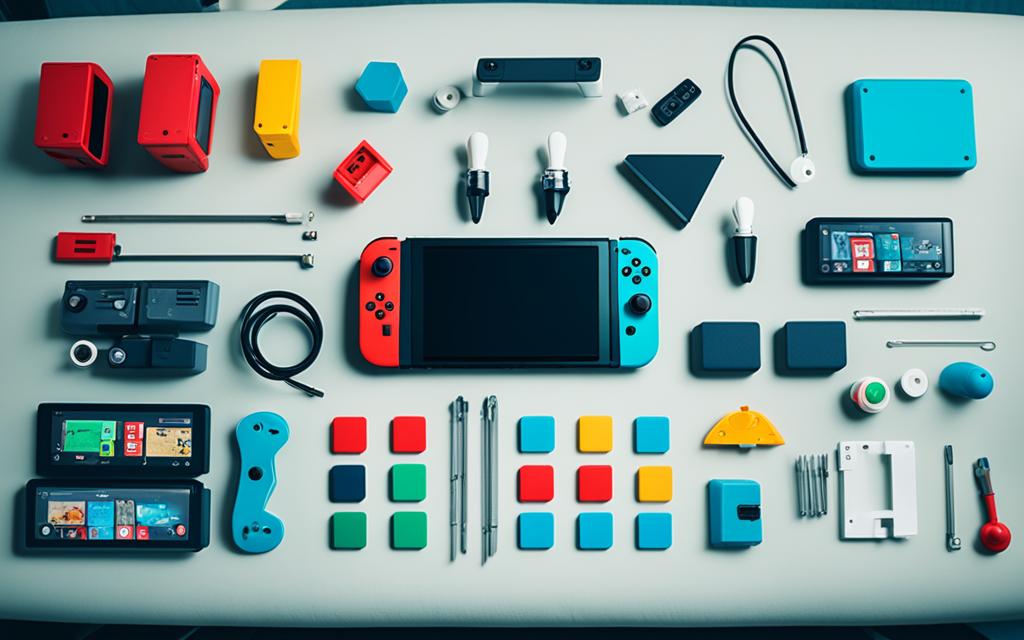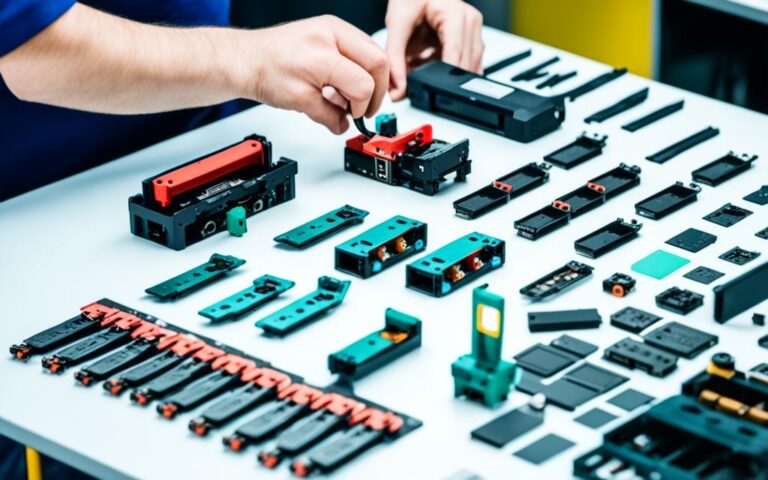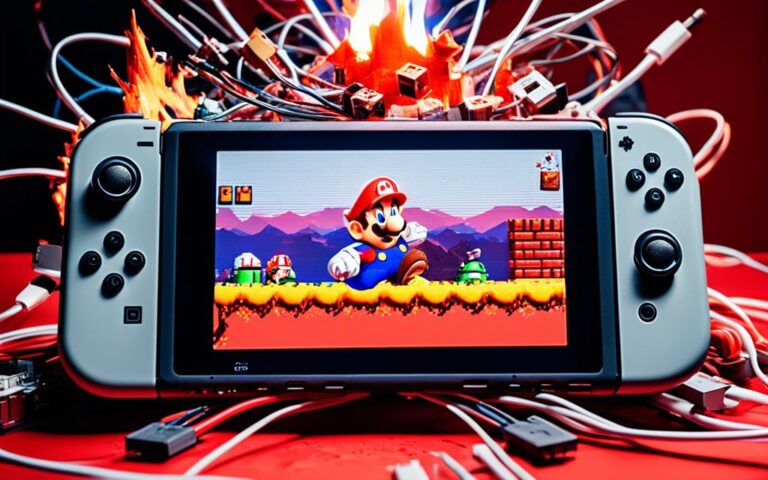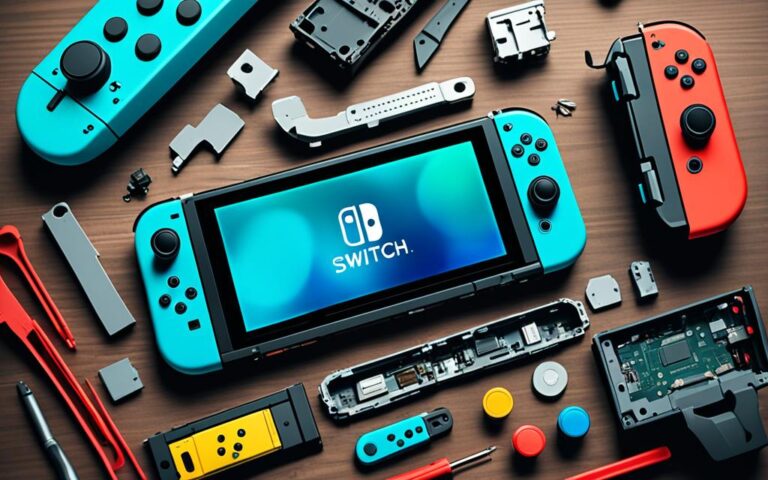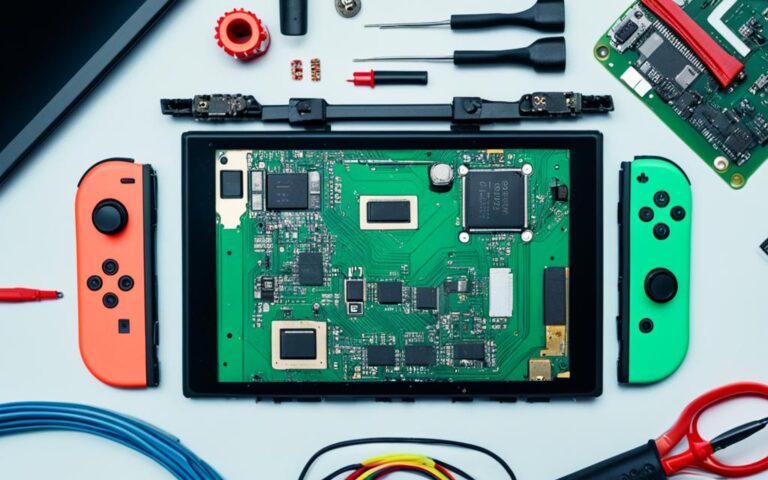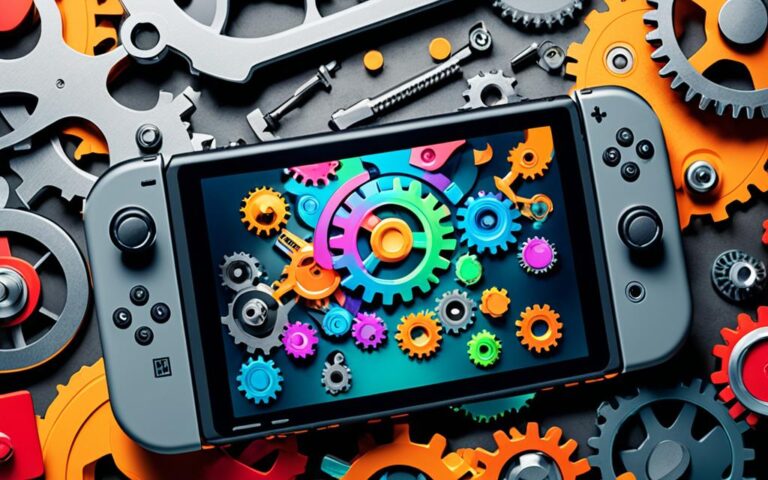The Psychology Behind Attachment to Our Nintendo Switches: Repair vs. Replace
Have you ever felt a sense of emotional attachment to an inanimate object? Perhaps a childhood toy or a sentimental item holds a special place in your heart. Well, it turns out that many individuals experience a similar bond with their Nintendo Switch consoles. Despite being just a piece of technology, the Nintendo Switch has managed to capture the hearts of millions worldwide.
With its innovative design, versatile gameplay options, and an extensive library of games, the Nintendo Switch has become much more than just a gaming console. It has become a companion, a source of entertainment, and even an emotional outlet for many. This emotional attachment stems from a combination of factors, including the unique gaming experiences it offers and the memories created while playing.
But what happens when our beloved Nintendo Switch encounters a problem or starts showing signs of wear and tear? Should we repair it or replace it? This is where the psychology behind attachment comes into play. Our emotional connection to our Nintendo Switches can often influence our decision-making process.
On one hand, the thought of replacing our trusted Nintendo Switch can be daunting. It’s not just about the financial aspect but also about letting go of something that has brought us so much joy and entertainment. The emotional attachment we have developed makes it difficult to part ways with our consoles, even in the face of technical issues.
However, there may come a point where repairing the Nintendo Switch becomes necessary. After all, no technology is immune to malfunctions or damage over time. In such instances, it is important to weigh the cost of repair against the sentimental value and the overall benefits of having a functioning console.
When considering repair, it’s essential to consult trustworthy professionals who specialize in Nintendo Switch repairs. They can assess the extent of the problem and provide guidance on whether repair is a feasible and cost-effective option. Not only can repairing the console potentially save money, but it can also help preserve the emotional connection we have developed with our gaming companion.
Ultimately, the decision to repair or replace our Nintendo Switches depends on various factors, including the severity of the issue, our attachment to the console, and the financial implications. Whichever path we choose, it is important to remember the joy and memories that our Nintendo Switch has brought into our lives and to cherish the emotional connection we have formed.
In the following sections, we will delve deeper into the psychology of emotional attachment, explore the unique features of the Nintendo Switch, discuss its marketing strategy, and examine the evolution of Nintendo consoles. By gaining a better understanding of these aspects, we can appreciate the emotional bond we have with our Nintendo Switches and make informed decisions about their care and maintenance.
The Technology Acceptance Model (TAM) and User’s Attitude
In the field of technology adoption and user behavior, the Technology Acceptance Model (TAM) plays a crucial role in understanding how individuals perceive and interact with new technology. Developed by Fred Davis, TAM is a widely recognized framework for predicting and explaining the acceptance and usage of technology.
One of the key factors identified by TAM is the perceived ease of use, which refers to the level of simplicity users associate with a particular technology. When users perceive a technology as easy to use, they are more likely to adopt it and engage with it voluntarily. Additionally, perceived usefulness, which relates to the user’s perception of the benefits and value of the technology, also significantly influences user behavior intentions.
The study at hand applies the TAM framework to gain insights into the user’s attitude towards the Nintendo Switch and its impact on behavioral intentions. By assessing the perceived ease of use and perceived playfulness of the Nintendo Switch, the researchers aim to understand the factors that drive users’ intentions to engage with the console.
“The hypothesis of this study proposes that perceived ease of use has a significant effect on perceived usefulness, which, in turn, influences user behavior intentions towards the Nintendo Switch.”
Factors influencing user behavior intentions
| Factors | Description |
|---|---|
| Perceived Ease of Use | The perceived level of simplicity and ease associated with using the Nintendo Switch. |
| Perceived Playfulness | The extent to which users perceive the Nintendo Switch as entertaining, enjoyable, and fun to use. |
| Perceived Usefulness | Users’ perception of the benefits, value, and practicality offered by the Nintendo Switch. |
Through the analysis of these factors, the study seeks to provide valuable insights into the user’s attitude towards the Nintendo Switch and shed light on the underlying motivations that drive individuals to engage with the console. Understanding how these factors influence user behavior intentions can help inform future developments and improvements in the gaming industry.
Emotional Attachment to Inanimate Objects: Autism and OCD
Many individuals, especially those with autism or OCD, experience emotional attachment to inanimate objects. This phenomenon, although not fully understood, has garnered attention and sparked curiosity among researchers and psychologists. It raises intriguing questions about the human capacity for empathy, the nature of attachment, and the impact of these attachments on daily functioning.
A personal connection to inanimate objects can manifest in various ways. Some individuals find comfort and solace in familiar objects, associating them with feelings of security and emotional well-being. For others, attachment to inanimate objects may stem from a unique sensory experience, such as synesthesia, in which the senses blend together, resulting in heightened emotional responses. Whatever the underlying cause, emotional attachment to inanimate objects has the potential to profoundly impact an individual’s life.
Studies have shown that individuals with autism or OCD may be more likely to develop emotional attachments to inanimate objects. These attachments often serve as a source of emotional support, providing stability and a sense of control in a complex world. For individuals on the autism spectrum, an emotional attachment to inanimate objects can help navigate social and sensory challenges by offering familiarity and predictability.
The Impact of Emotional Attachment
The emotional attachment to inanimate objects experienced by individuals with autism or OCD can have both positive and negative effects on daily functioning. On one hand, these attachments offer a sense of comfort, security, and emotional support, acting as a coping mechanism in times of stress or anxiety. They provide a stable and reliable source of comfort that can help regulate emotions and reduce feelings of loneliness.
On the other hand, excessive emotional attachment to inanimate objects can interfere with relationships and daily tasks. It may lead to difficulty letting go of objects, causing distress and impairing decision-making abilities. For individuals with OCD, emotional attachment to objects can exacerbate obsessions and compulsions, reinforcing maladaptive behaviors.
To fully understand the complexity of emotional attachment to inanimate objects, further research is needed. Through better comprehension, psychologists and clinicians can develop effective strategies to support individuals with autism or OCD, facilitating adaptive coping mechanisms and promoting healthy emotional connections.
“The emotional attachment individuals with autism or OCD feel towards inanimate objects is a unique lens through which to explore the intricacies of human emotions and connections. It opens up a world of possibilities for further research and understanding.” – Dr. Jane Collins
The Path to Understanding
Researchers continue to explore the underlying mechanisms and psychological processes that contribute to emotional attachments to inanimate objects. By studying individuals with autism, OCD, and other related conditions, researchers aim to shed light on the neurological and cognitive aspects of these attachments.
Understanding the emotional attachment to inanimate objects can have broader implications beyond autism and OCD. It offers insights into the human capacity for empathy, the nature of attachment, and the range of emotional experiences that individuals can have. By gaining a deeper understanding, we can develop more inclusive and compassionate approaches to mental health and well-being.
| Emotional Attachment to Inanimate Objects: Autism and OCD |
|---|
| Phenomenon of emotional attachment in individuals with autism and OCD |
| The role of familiarity and predictability in emotional attachments |
| The impact of emotional attachment on daily functioning |
| Positive and negative effects of emotional attachments |
| Excessive emotional attachment and its interference in relationships and daily tasks |
| The need for further research to support individuals with autism or OCD |
| Exploring the neurological and cognitive aspects of emotional attachments |
| Broad implications and insights into human emotions and connections |
| Developing inclusive and compassionate approaches to mental health and well-being |
The Evolution of Nintendo Consoles: Wii U to Nintendo Switch
When examining the evolution of Nintendo consoles, the transition from the Wii U to the Nintendo Switch stands out as a significant turning point. The Wii U, despite its initial buzz and promise, fell short of expectations due to confusing marketing tactics and limited success in the market. However, Nintendo learned from its missteps and used them as a springboard to create the Nintendo Switch, a console that boasts improved hardware architecture, a revolutionary portable home gaming experience, and a captivating lineup of games.
“The Nintendo Switch represents the culmination of Nintendo’s determination to rectify the mistakes made with the Wii U while capitalizing on its potential.”
One of the major similarities between the Wii U and the Switch is the concept of a hybrid console that combines both handheld and traditional home gaming. However, the Switch takes this idea to the next level with its seamless transition between handheld and docked modes, allowing players to experience the same high-quality gaming experience whether they are at home or on the go.
The improved hardware architecture of the Nintendo Switch provides a more powerful and efficient gaming experience compared to its predecessor. The console’s innovative design allows for enhanced graphics, faster processing speeds, and smoother gameplay. Additionally, the Switch introduced the Joy-Con controllers, which offer unique functionalities such as motion controls, HD rumble, and the ability to detach and use them as individual controllers for multiplayer gaming.
One of the most significant advancements the Nintendo Switch brings to the table is its strong lineup of games. With popular titles like “The Legend of Zelda: Breath of the Wild” and “Super Mario Odyssey,” the Switch appeals to both casual and hardcore gamers alike. The console’s diverse game library continues to expand, with constant releases of new titles and the inclusion of beloved classics from previous Nintendo consoles.
To visualize the evolution of Nintendo consoles from the Wii U to the Nintendo Switch, let’s take a look at a comparison table:
| Console | Wii U | Nintendo Switch |
|---|---|---|
| Release Date | 2012 | 2017 |
| Main Features | Tablet controller with second screen | Hybrid design for seamless handheld and docked gaming |
| Game Library | Limited third-party support and exclusive Nintendo titles | Expansive library with a mix of first-party and third-party games |
| Hardware | Less powerful compared to other contemporary consoles | Improved hardware architecture for enhanced graphics and performance |
| Unique Features | Off-TV play on the tablet controller | Joy-Con controllers, HD rumble, and motion controls |
The evolution from the Wii U to the Nintendo Switch showcases Nintendo’s commitment to learning from past mistakes and pushing the boundaries of innovation. The Switch not only addresses the shortcomings of its predecessor but also introduces new features and experiences that have captivated gamers worldwide.
Stay tuned for the upcoming sections of this article to explore the unique features, marketing strategy, and overall impact of the Nintendo Switch in the gaming industry.
The Unique Features of the Nintendo Switch
The Nintendo Switch offers a range of unique features that set it apart from other consoles. Its versatility and innovative design make it a game-changer in the world of gaming.
Seamless Switching Between Portable and Home Gaming
One of the standout features of the Nintendo Switch is its ability to seamlessly switch between portable and home gaming. With just a simple dock, you can connect the console to your TV and enjoy big-screen gaming. Alternatively, you can remove it from the dock and continue playing your favorite games on the go. This flexibility provides players with the freedom to play wherever and whenever they want.
Versatility of the Joy-Con Controllers
The Joy-Con controllers are another unique feature of the Nintendo Switch. These detachable controllers can be used in various configurations to suit different play styles. Whether you prefer using them individually, attached to the console, or as separate controllers for multiplayer games, the Joy-Con controllers adapt to your preference. Their compact size and advanced motion-sensing capabilities enhance the gaming experience and allow for immersive gameplay.
Touchscreen Interface and HD Gaming on the Go
The Nintendo Switch features a responsive touchscreen interface, adding another dimension to gameplay. The touchscreen allows for intuitive controls and enhances the overall user experience. Additionally, the console’s handheld mode supports high-definition gaming on the go, providing crisp visuals and immersive gameplay wherever you are.
Motion-Controlled Gameplay
Another unique feature of the Nintendo Switch is its motion-controlled gameplay. The Joy-Con controllers are equipped with motion sensors that allow players to interact with games through physical gestures and movements. This feature adds a new level of interactivity to gameplay and opens up a whole new range of gaming experiences.
Overall, the Nintendo Switch combines and improves upon features from previous Nintendo consoles, offering a gaming experience that is both versatile and innovative. Its seamless switching between portable and home gaming, the versatility of the Joy-Con controllers, the touchscreen interface, HD gaming on the go, and motion-controlled gameplay make it a must-have for gamers of all ages.
The Marketing Strategy of the Nintendo Switch
In the world of gaming consoles, a strong marketing strategy is essential for success. The Nintendo Switch, with its unique features and innovative design, has captivated the gaming community since its release. In this section, we will analyze the marketing strategy employed by Nintendo for the Nintendo Switch and compare it to its predecessor, the Wii U.
When the Wii U was released, its marketing campaign faced significant challenges. Consumers were confused about the console’s capabilities and how it differed from the original Wii. This lack of clarity led to a slow start for the Wii U and ultimately contributed to its limited success in the market.
In contrast, Nintendo learned from its mistakes and adopted a different approach with the Nintendo Switch. The marketing for the Switch was clear, concise, and focused on highlighting its unique selling points. The messaging emphasized the console’s ability to seamlessly switch between handheld and docked play, providing gamers with the freedom to play anytime, anywhere.
“The Nintendo Switch is a revolutionary gaming console that offers the best of both worlds: the portability of a handheld device and the immersive experience of a home console. With the ability to seamlessly transition between modes, gamers can enjoy their favorite titles wherever they go.”
Additionally, Nintendo made significant consumer-friendly changes with the Nintendo Switch. The company removed the cumbersome friend code system and implemented user-friendly online features. This change not only simplified the gaming experience for users but also fostered a stronger sense of community among players. Furthermore, Nintendo eliminated region-locking, allowing gamers to access a wider selection of games from different regions.
The Nintendo Switch’s marketing strategy also focused on showcasing a diverse and appealing game lineup. This included both first-party titles, such as “The Legend of Zelda: Breath of the Wild” and “Super Mario Odyssey,” as well as strong third-party support. By partnering with well-known developers and securing popular game releases, Nintendo demonstrated that the Switch was a console capable of delivering a broad range of gaming experiences.
Key Points:
- The marketing strategy for the Nintendo Switch was clear, concise, and focused on highlighting its unique selling points.
- Nintendo learned from the poor marketing of the Wii U and adopted a different approach with the Switch.
- Consumer-friendly changes, such as removing friend codes and region-locking, were implemented.
- A diverse and appealing game lineup, including both first-party and third-party titles, was emphasized.
The effective marketing strategy employed by Nintendo, along with the consumer-friendly changes made for the Nintendo Switch, contributed to its widespread success. The contrast between the confusing marketing of the Wii U and the clear communication surrounding the Switch highlights the importance of a well-executed marketing strategy in the gaming industry.
The Nintendo Switch: An All-in-One Gaming System
The Nintendo Switch is not just your average gaming console. It brings together a host of features and functionalities, making it an all-in-one gaming system that offers a unique and versatile gaming experience.
One of the standout features of the Nintendo Switch is its backward compatibility. Players can enjoy a vast library of games from the Wii U, which can be played both at home and on the go. This allows gamers to have their favorite titles with them wherever they are, whether they’re exploring Hyrule in The Legend of Zelda: Breath of the Wild or participating in multiplayer battles in Super Smash Bros. Ultimate.
Third-party support is another significant advantage of the Nintendo Switch. The console has garnered the attention and support of numerous developers and publishers, resulting in a diverse range of games for players to enjoy. From indie gems like Stardew Valley to AAA titles like The Witcher 3: Wild Hunt, the Switch offers a wide selection of games across various genres.
The versatility of the Joy-Con controllers adds another dimension to the Nintendo Switch experience. These detachable controllers can be used individually for multiplayer gaming or attached to the console for on-the-go gaming. Their motion-sensing capabilities and HD Rumble feature enhance gameplay, immersing players in the action like never before.
The Nintendo Switch truly caters to different play styles, whether you prefer handheld mode, tabletop mode, or playing on the big screen. Its adaptability and flexibility make it a complete gaming system that can adapt to your gaming preferences and lifestyle.
“The Nintendo Switch offers a seamless gaming experience, allowing players to enjoy their favorite titles from previous Nintendo consoles while embracing the future of gaming with its portable and versatile design.”
With its all-in-one capabilities, backward compatibility, third-party support, and innovative controller design, the Nintendo Switch has firmly established itself as a must-have gaming system for gamers of all ages and preferences.
Conclusion
In conclusion, the Nintendo Switch has undoubtedly created a strong emotional attachment among its users. This attachment can be attributed to its unique features, versatile gameplay options, and compatibility with popular Nintendo games. The success of the Nintendo Switch can also be explained by the application of the Technology Acceptance Model, which helps understand user behavior intentions.
Furthermore, Nintendo’s effective marketing strategy played a significant role in promoting the console and fostering this emotional attachment. By listening to consumer feedback and implementing consumer-friendly changes, Nintendo has created a gaming system that resonates with players on an emotional level.
Overall, the Nintendo Switch has successfully combined technological innovation and an understanding of consumer behavior to create a gaming console that people feel a genuine emotional attachment towards. Its acceptance by users worldwide is a testament to its success and the effectiveness of Nintendo’s marketing strategy.
